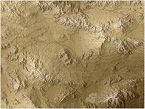WildCatNL
Posts: 513
Joined: 3/27/2009
From: Eindhoven, the Netherlands
Status: offline

|
quote:
ORIGINAL: exsonic01
Thank you so much for this wonderful work~! But may I have a question?
1) It seems that your work flow is different from mine, the PDF suggest to progress the road, forest, towns, fields and water later. But I was already progressing towns and roads in QGIS.... Shall I exactly keep this work flow?
QGis doesn't force you into any specific order (elevation first, or manual drawings first, rivers first or rivers last, etc).
I have a preference for elevation first, so I have a feel for the map in hexagons. Next, I prefer to do rivers first (since they may force me to shift roads - we'll probably see that happening for the Minden map), highways, major streams, primary roads, rail roads, minor roads, towns, forests and fields. Followed by the occasional shifting of streams, roads, towns in order to better capture the "character" of the area (at the cost of some positional error).
For the map you're currently working on, you should be fine (since you don't have major rivers).
quote:
2) Hex grid size - Is the manual correct? (short distance 433.0127m and long distance 500m). Because that setting will give us 12 hexes in 5km grid. On the other hand, 500m / 577.3505m option gives 10 hexes in 5km grid, which matches well with 500m setting of Hex. I'm bit confused here....
The manual is correct. Hexes are 500m (500m high, or 500m side to opposing side), with boils down to 433 along the horizontal axis due to overlap / math / ...
If you take one of the original FCRS maps, these are 2569x1952 pixels, which (at 128 pixel per km) boils down to 20.1km x 15.25km for the map. The .25 in 15.25 is due to half a row of inaccessible hexagons showing up at the bottom.
quote:
3) Which maps are the most recommended? ESRI-nationalgeographic, OSM, Google, Bing, MapQuest.... For some region (like North Korea that I'm working on), maps are really different with each other, I'm not sure which one to trust.
None can be trusted, but some are less wrong than others... Which also tells you map making involves "art".
Seriously, IMO it depends a lot on the area. OSM is pretty good in Germany, most likely due to Germany municipalities / public works adding/improving data. US based map providers typically have great data for the USA. For Korea, I don't know.
The benefit of satellite views is that you can do your own interpretation.
quote:
4) I used WGS 84 Pseudo Mercator, since some maps are not aligned with each other under WGS 84 (Pyongyang is 51S~52S). Is this OK? Or should I need to adhere to 52S?
As long as your area box and hex grid have been defined under UTM52N (northern hemisphere), you have your scale correct. Then you can use on-line satellite / map views (and have QGis switch back to Pseudo Mercator to use them) to draw your roads. Just be sure to switch back to UTM52N before exporting the bitmap using the Print Composer.
If you did set-up your area box and hex grid using Pseudo Mercator, your map's scale will be off. You can get a feel for the size of the error by comparing distances on your hex map against measuring distance on the "real terrain" in ArcGis' webmap viewer.
quote:
Some additional recommendable QGIS modules:
- MultiQML = Easy loading of styles to vectors (road/water) and polygons (towns and forests)
- QuickMapServices (QMS) = Numerous map options
- Generalizer = if you want to curve-fit roads and streams from QGIS
I'll look them up. Thanks!
William
_____________________________
William
On Target Simulations LLC
|
 Printable Version
Printable Version









 .
. 








 New Messages
New Messages No New Messages
No New Messages Hot Topic w/ New Messages
Hot Topic w/ New Messages Hot Topic w/o New Messages
Hot Topic w/o New Messages Locked w/ New Messages
Locked w/ New Messages Locked w/o New Messages
Locked w/o New Messages Post New Thread
Post New Thread